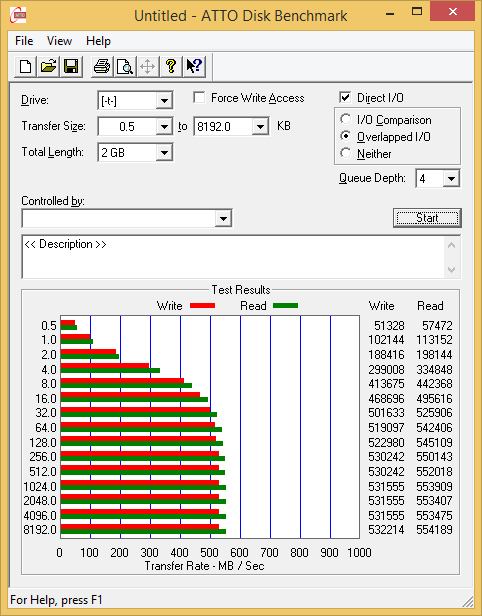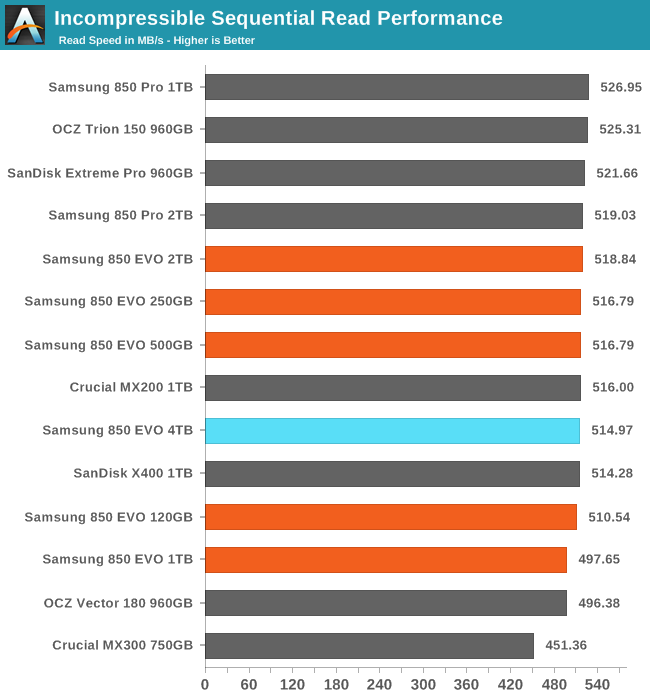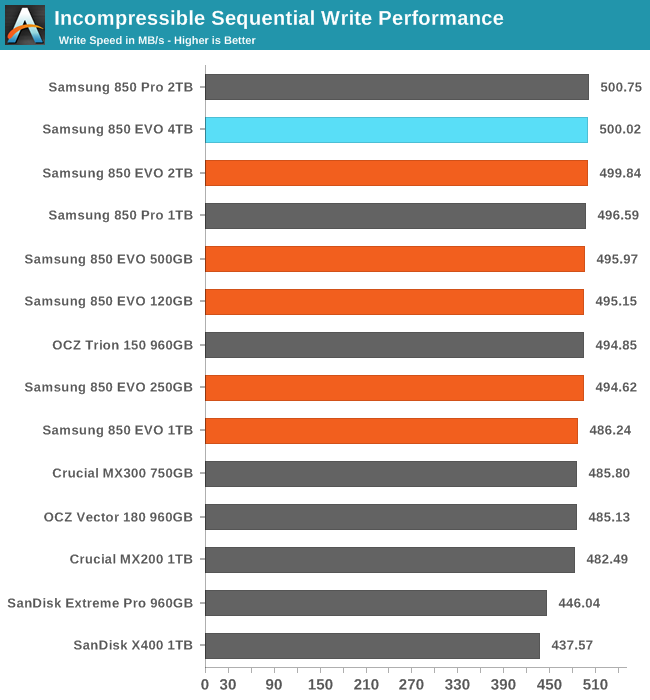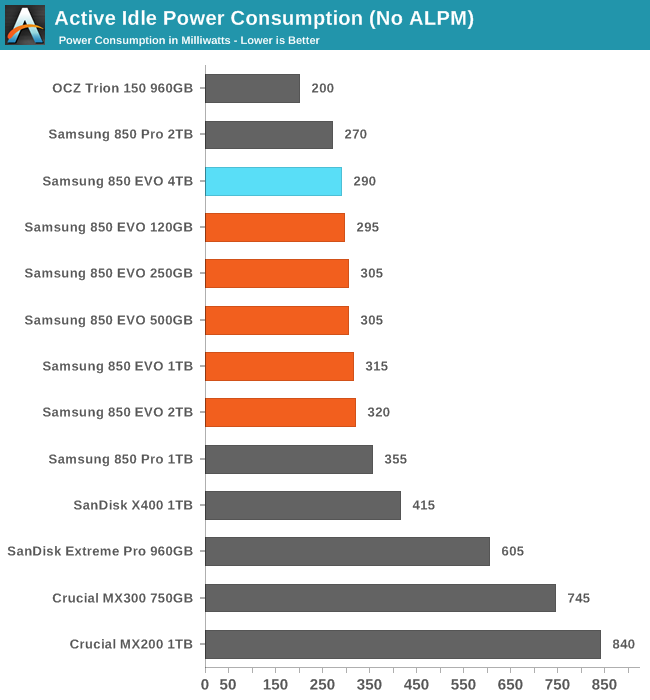The Samsung 850 EVO 4TB SSD Review
by Billy Tallis on July 11, 2016 10:00 AM ESTATTO
ATTO's Disk Benchmark is a quick and easy freeware tool to measure drive performance across various transfer sizes.
 |
|||||||||
The ATTO plot for the 4TB 850 EVO shows no problems and very slightly better read speeds than the 2TB 850 EVO.
AS-SSD
AS-SSD is another quick and free benchmark tool. It uses incompressible data for all of its tests, making it an easy way to keep an eye on which drives are relying on transparent data compression. The short duration of the test makes it a decent indicator of peak drive performance.


As expected, the AS-SSD results are unremarkable. Even if the new V-NAND were slower, the 4TB drive has more than enough parallelism to provide peak performance that saturates the SATA link.
Idle Power Consumption
Since the ATSB tests based on real-world usage cut idle times short to 25ms, their power consumption scores paint an inaccurate picture of the relative suitability of drives for mobile use. During real-world client use, a solid state drive will spend far more time idle than actively processing commands. Our testbed doesn't support the deepest DevSlp power saving mode that SATA drives can implement, but we can measure the power usage in the intermediate slumber state where both the host and device ends of the SATA link enter a low-power state and the drive is free to engage its internal power savings measures.
We also report the drive's idle power consumption while the SATA link is active and not in any power saving state. Drives are required to be able to wake from the slumber state in under 10 milliseconds, but that still leaves plenty of room for them to add latency to a burst of I/O. Because of this, many desktops default to either not using SATA Aggressive Link Power Management (ALPM) at all or to only enable it partially without making use of the device-initiated power management (DIPM) capability. Additionally, SATA Hot-Swap is incompatible with the use of DIPM, so our SSD testbed usually has DIPM turned off during performance testing.


The 4TB EVO has slightly lower idle power consumption than the 2TB EVO, but both still draw twice as much power in the slumber state as the smaller 850 EVOs with the MEX and MGX controllers.










145 Comments
View All Comments
JellyRoll - Monday, July 11, 2016 - link
It is relative. 75 total drive writes of 4TB are huge.Daniel Egger - Monday, July 11, 2016 - link
Not at all. There're many scenarios where one would chose a larger drive without immediate need. In fact I'd never take a drive I can immediately fill up a 100%, what'd be the point in that? Also this is a consumer drive and how many customers do you know *writing* away TB after TB, many kinds of data are actually write-once-read-often...My laptop SSD has been powered on for pretty much exactly two years now and seen 10TB writes per year. My home VM server sees 9.2 TB writes per year. So pretty much harmless and those two cases are already very much non-consumer scenarios...
ddriver - Monday, July 11, 2016 - link
If you really do a lot of writing, say you work with RAW 4k video, then you really don't care that much about latency, all you care about is bandwidth and capacity. In this case, what you really need is a good RAID controller and a dozen of good old HDDs.vladx - Monday, July 11, 2016 - link
This drive is not suited for 4K video work, everyone knows that. Using an EVO for that kind of work iwould be very irresponsible and failure is 100% in the hands of the user .Oxford Guy - Monday, July 11, 2016 - link
I'll agree with you if there is a big red sticker on the box that says that.vladx - Tuesday, July 12, 2016 - link
@Oxford Guy: And this why we get people ranting about SSDs when it's their own fault for being ignorant.Kevin G - Monday, July 11, 2016 - link
Indeed and at this point you'd want a fast NVMe drive for high quality 4k captures.A 4 TB SATA SSD does have utility as a means to provide storage for an assort of cameras and equipment build around SATA drives. There are a lot of those out there mainly because U.2 hasn't taken hold (yet?).
ddriver - Monday, July 11, 2016 - link
Who captures video to PC LOL. Who logs a computer along with a camera.Impulses - Monday, July 11, 2016 - link
Some high end cine cameras actually capture straight to SSDImpulses - Monday, July 11, 2016 - link
Pretty sure he meant it as in 'working with 4K' anyway.